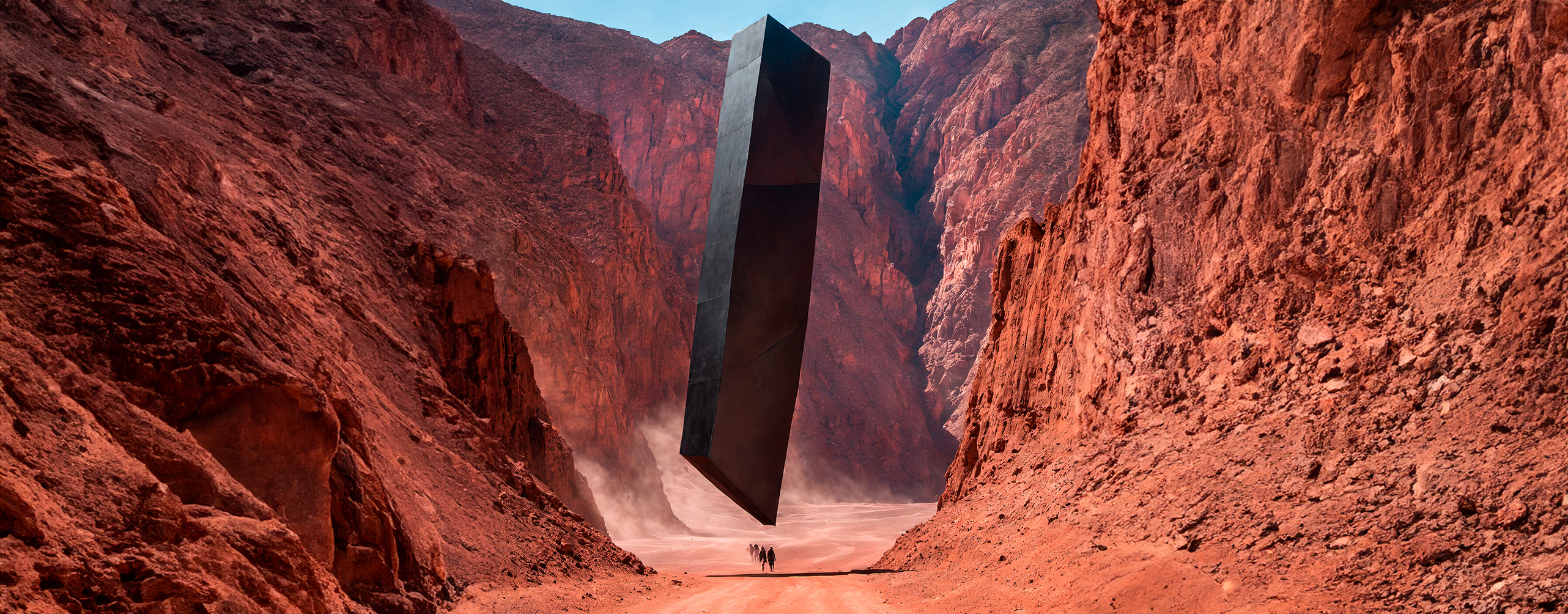Fértil Discos presents “Paisajes“, the first compilation that makes visible landscapes at risk of extinction in Latin America. With a conglomerate of global producers from countries such as Argentina, Chile, Peru, Ecuador, Colombia, Venezuela and Nicaragua, among others, it proposes 14 tracks in the key of soundscape and electronic song that dialogue with the environment to introduce us to different geographies that suffer the consequences of human exploitation.
We talked with Andres and Nim, curators and producers of the project.
– Tell us a little bit about Fértil Discos and your role in this project.
Andres: Fértil is an independent label that I founded in 2014 to bring together artists from the South American independent electronic music scene. From the publication of albums, compilations and production of events, Fértil proposes to unite Latin American popular music and electronic music in order to reread the traditions and give them a fresh air. Among its almost 60 titles are “El Camino de Leda”, a tribute to Leda Valladares, albums by Tremor + Micaela Chauque, El Remolón, Barda, Mente Orgánica (Colombia), just to mention a few, and collaborations with artists such as Chancha Vía Circuito, Uji and La Charo. In the course of this year we have released the album “Aparecido” by Argentinean Pol Nada, the compilations “Del Parche Al Sampler” (curated by Lauphan and Villa Diamante) and we have just released the album “Paisajes”. We are interested in giving place to common causes that have to do with the idiosyncrasy and the Latin problematic, that is how the care of the environment, the space for gender diversity and the revaluation of traditional music are values that summon us in particular.
With Fértil we joined in the executive production of the project and rounded out the idea and the artistic curatorship proposed by Nim.
– How did “Paisajes” come about? Tell me a little about the context, the first conversations and ideas.
Andres: Paisajes, came from a proposal by Nim (founding member of ZZK Records), an old friend and acquaintance of the environment, who had made a call originally intended for ZZK, but due to agenda and artistic line, it didn’t work out so well for the label and with Fértil it did, since it has a lot to do with the sound that we have been spreading. Thus, there were about 12 songs selected but, in the meantime, some of them were left by the wayside because they had already been released or they didn’t fit in well with the rest of the songs.
When I included myself and started to put together the “puzzle” I felt like adding more women and dissidents, and other like-minded artists. Then Mente Orgánica, Naoba, Brawlio, Natalia Schvartz and the recording of Moira Millan joined in, which acted as a separator and filled the album with more meaning. Fértil also gave it an executive leg, the idea of having a solidary side and the general assembly of the sonic journey…
The song we did with Brawlio is also part of a more extended version of the EP we are just about to release, called Coplas Para Amar o Morir.
 El Remolón y Brawlio
El Remolón y Brawlio
– Was there any connection with the proposed places before inviting the artists? What comes first? How does the conversation between place-artist take place? First the themes emerged and then they were asked to associate it with a landscape at risk of extinction in their city.
Andres: Being musicians, artists, djs and producers, it is honest to admit that we are not strictly environmental. We are convoked, moved and hurt by everything that is happening to the environment, the advance of the right wing, the denial of global warming, extractivism at any price and the displacement of communities and native peoples. We watch with anxiety how protected areas are being burned, how river flows are dropping and how in the north of the country roads are being cut for a just cause, a constitutional reform that generates loss of rights in local communities.
We selected the most climatic and environmental themes and decided to put together the album by asking each artist to associate their music to a landscape of their land that they felt was in danger. The decision was up to each musicx, producer and each one was able to find a sense of identification very quickly. No one found it difficult and by chance, everyone had a landscape in danger of extinction in their town. It is worth mentioning that just a few weeks before releasing the song, for example, there was a plebiscite in Ecuador that said No to mining in the Chocó Andino, the most important mountain in Quito, Ecuador.
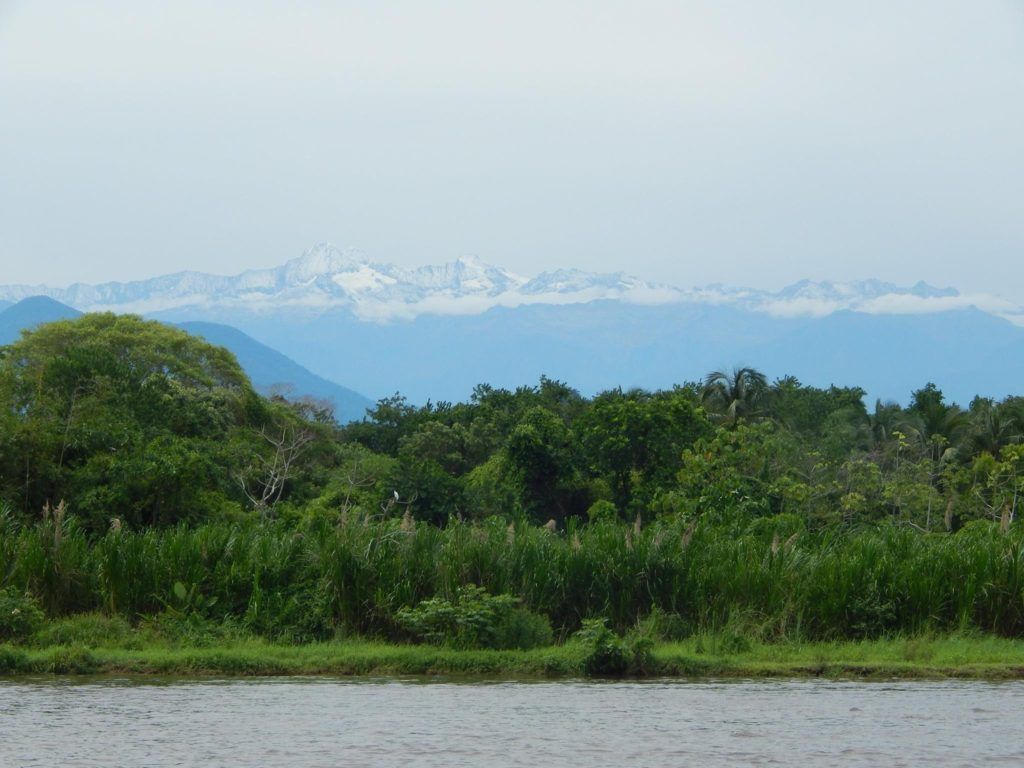
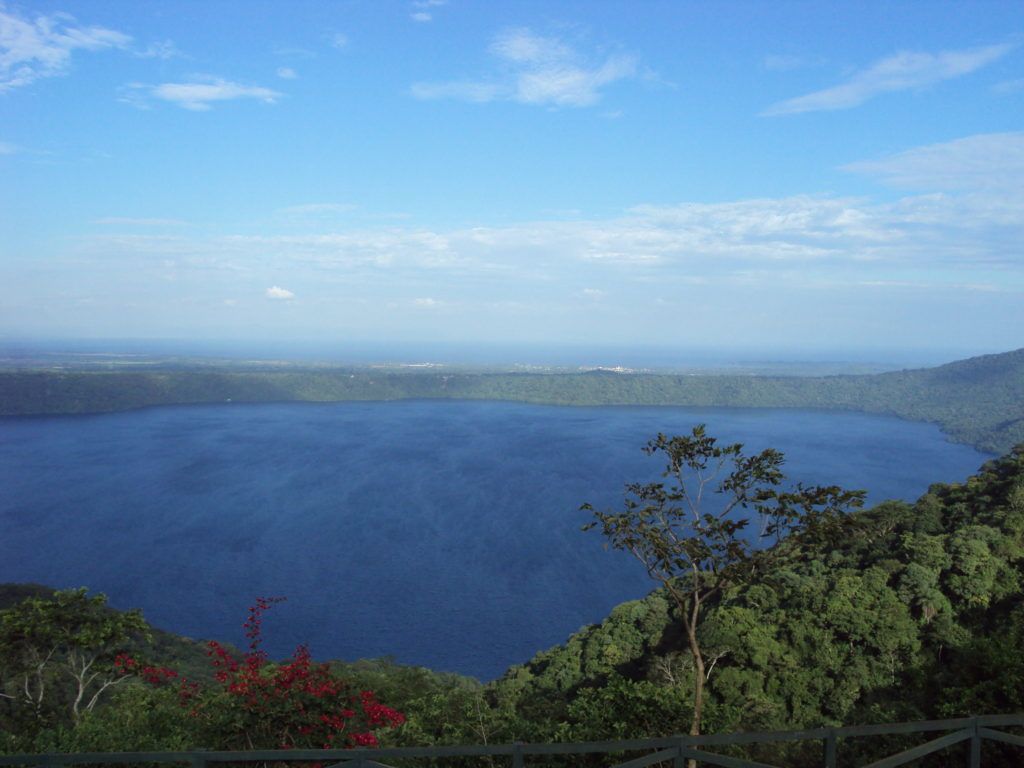
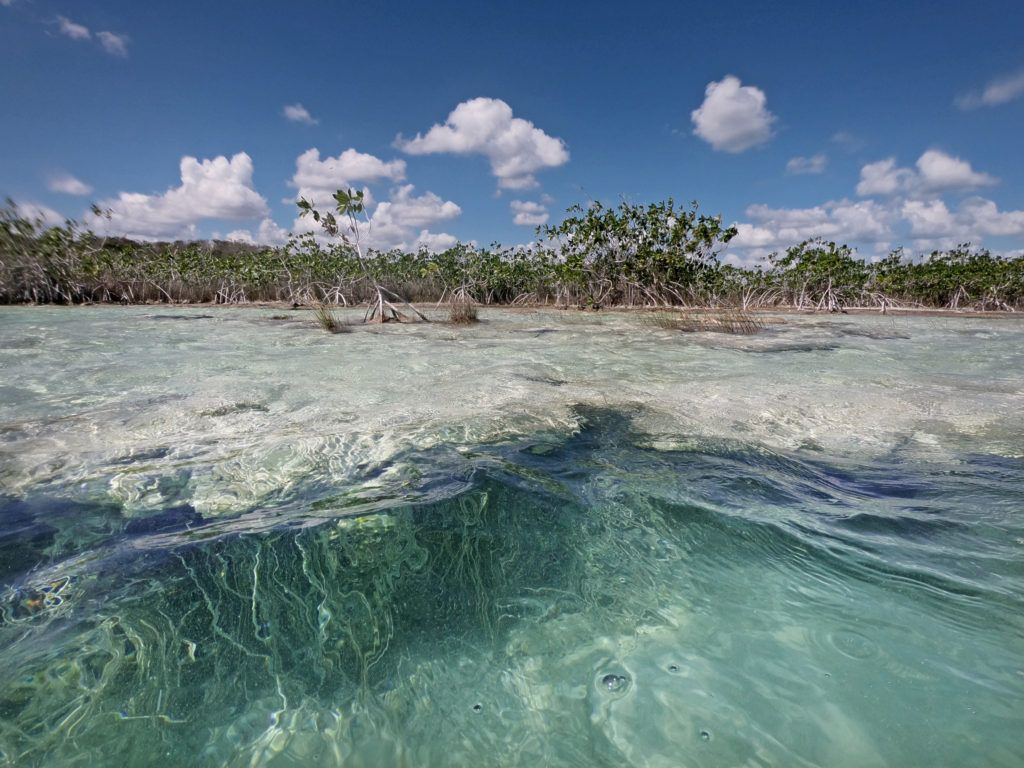

The inclusion of an NGO gives it a sense that we are not only making visible and knowing the different regional problems that our continent suffers, but also having a qualified voice that allows us to give an accurate opinion of the problem and also to carry out actions of regeneration with the money that can be collected with this album.
We are about to launch a campaign for people to put a track from Paisajes on their alarm clock, at zero cost for each user. That is to say, with each wake up in the morning, we are raising awareness and adding a grain of sand to regenerate the world. It is an idea taken from an app called EcoAlarm.

– When and how did Germinar ONG start?
Andrés: when Nim told me about the project, I thought it was ethical that if we were denouncing and in some way “profiting” from ecosystems that are suffering from human intervention, it made sense that there should be an intention to give something back to the earth with this album as well. That is how we decided to look for NGOs that were working on it. That’s how another friend of the house, Carla Sanguinetti, who recently opened a nursery-bar called Brotal, connected us with Germinar, based in Buenos Aires, which has been raising awareness about the importance of environmental care and preservation of biodiversity through socio-environmental regeneration actions in protected areas in Argentina. We found this regeneration project very interesting because in this way we are not only raising awareness and spreading the word, but we are also contributing to regeneration through the planting of trees. We know that it may be almost symbolic, but it is a grain of sand that does us good. That is to say, the phrase “listening to this album, you are contributing to regenerate the planet”, has strength and gives a lot of sense to what we do.
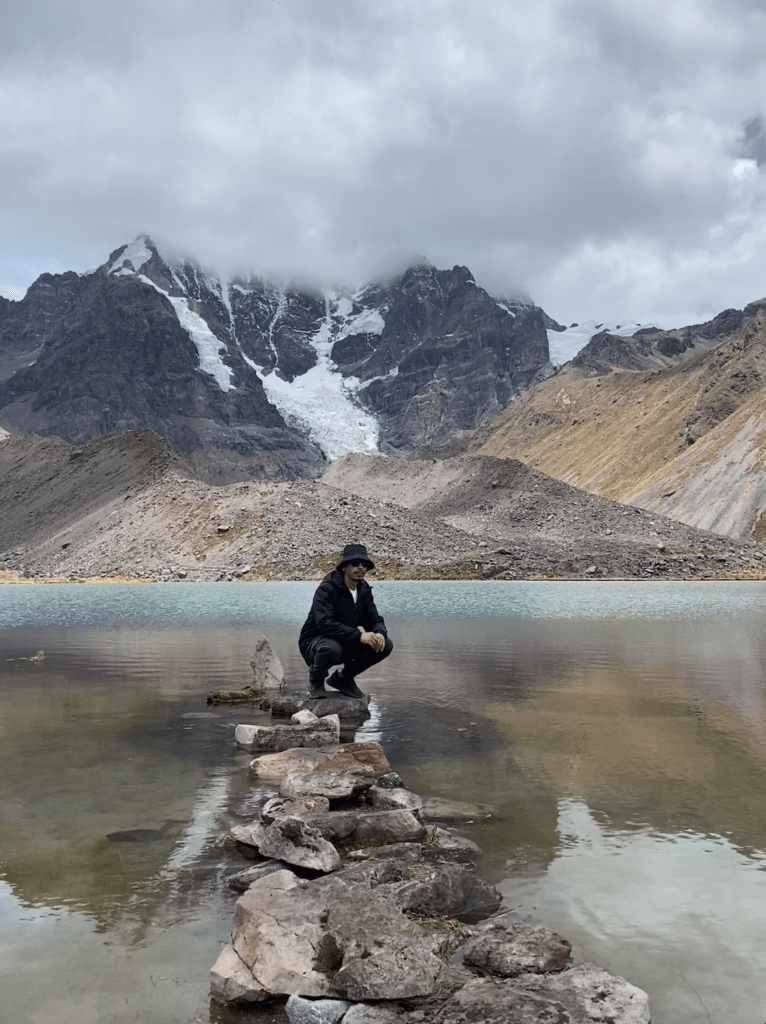 Pawkarmayta and the Ausangate snow-capped mountain in Cusco, which is increasingly suffering the consequences of snowmelt.
Pawkarmayta and the Ausangate snow-capped mountain in Cusco, which is increasingly suffering the consequences of snowmelt.
– Tell us about the artists, a brief intro-bio and their connection or argument with the proposed track and geographical location.
Each song evokes an original landscape at risk. The water emergency and the installation of large landfills in the Atacama Desert by Chilean artist Yoyoyo, the high levels of contamination of Lake Masaya by Nicaraguan artists Naoba & Urso, the deforestation in Barquisimeto by the Argentine-Venezuelan band Santa Fuego, sewage pollution in Laguna Bacalar by the Argentine/American duo Cuervo Cuervo, the burning of wetlands in the Paraná delta by Argentine artists El Remolón & Brawlio, the mining exploitation of the Ausangate glacier by Peruvian artist Pawkarmayta, the mega-mining in the Andean Chocó by Ecuadorian artist Lascivio Bohemia, the extermination of the native forest by indiscriminate logging in the Sierra Nevada de Santa Marta by Colombian artist Mente Orgánica, the conflict in the Eastern Plains by the Colombian artist Ancestral Beats, and the cities that are eating nature by the recently disappeared artist Kraut (RIP) together with the Argentinean artist Rumbo Tumba.
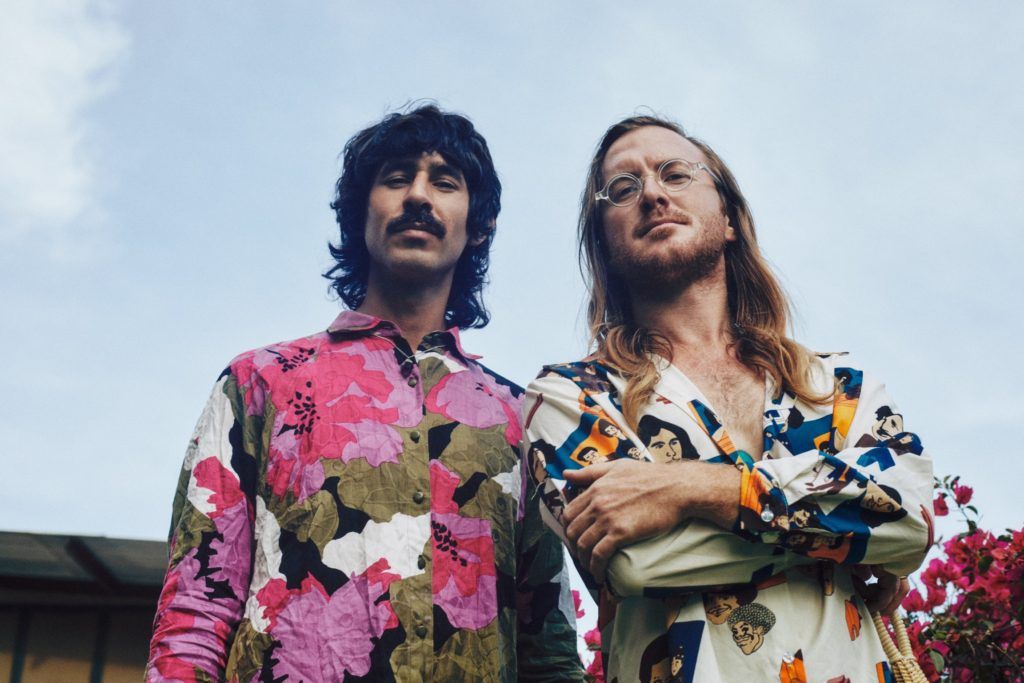
The song “Terricide” composed by the artists Drole, Agus Ganem and Dj Nim (a concept that combines ecocide, genocide and epistemicide), has a recitation of the militant Mapuche, Moira Millán, in which she questions the different forms of systematic extermination that man is exercising on the territories, the native peoples and other ways of inhabiting the world.
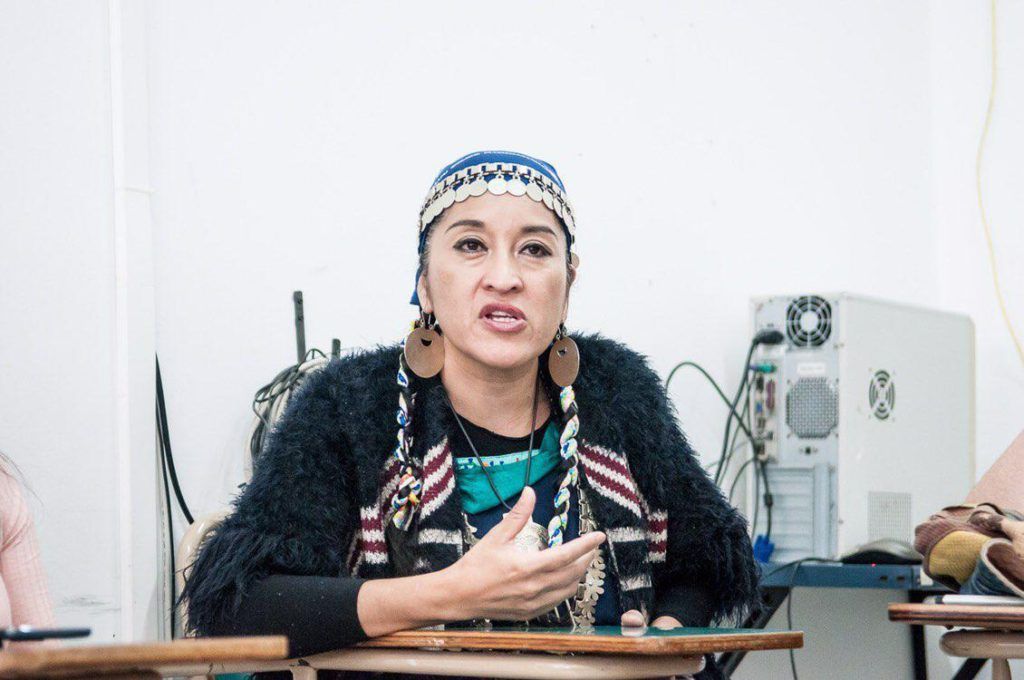 Moira Millan, Mapuche activist
Moira Millan, Mapuche activist
The album includes a reversion of the song “De Ushuaia a la Quiaca” by the Argentine project Andesónica that evokes images of Patagonia, rural villages and popular customs. The talented charanguista Patricio Sullivan and FU-5 pay tribute to the glaciers and question the cause of their melting.
– Could you elaborate more on the message and the role of music for you in this regard? How does “Paisajes” hopefully contribute to the reevaluation of culture and industry in relation to the environment?
There is a whole line of research between environment and culture. How to perform cultural practices without destroying the environment and moreover this project tries to contribute to improve it. How to generate awareness through music and how not to die trying is a big challenge. I think there is a greater awareness in the cultural industry in this regard, such as using recyclable cups at festivals, trying to be careful with waste, being kind to the sound so as not to damage the environment, respecting the hours of the sun for the party, etc.. But there is still a long way to go. There are people researching and working on this at PiIAC, UNTREF’s environment and culture program.
– Can you tell us anecdotes about the process? Challenges and unforeseen events?
We have already gathered several anecdotes. The strongest and saddest one was that during the curatorial process, we found out that one of the artists (Kraut, from Holland) had passed away. It was a great shock for the whole community to which we belong. Days before we had been talking to him about his track. After this tragic news, we decided to put a little pause to the whole process and we took some time to see what we would do with his track, which also collaborated with the argentinian Rumbo Tumba. A month after the event I decided to send an email to his account and his booker, telling them about the desire to continue with our original project and luckily, a few weeks later the family replied that they agreed to go ahead.
We also had to leave some songs at the last minute, that although we liked them, they cut the mood of the compi or we found that they were not unreleased, an essential requirement for this compilation, because we wanted it to be a novelty.
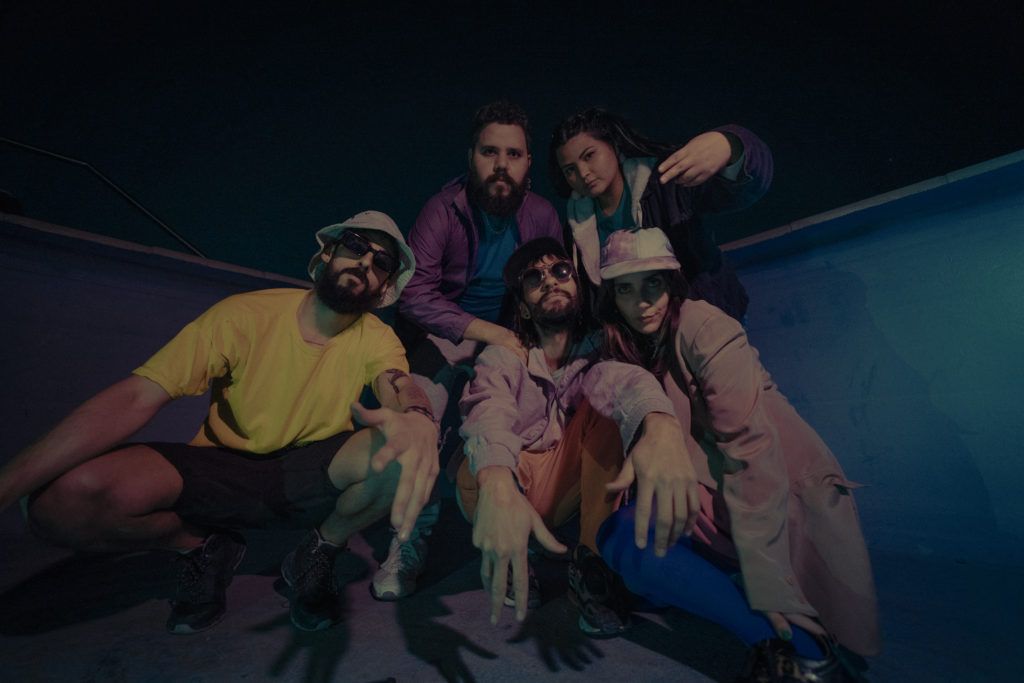
What has been the reception from the public and the community in general? Has there been any notable response in these first days?
For the moment excellent, a lot of interest and gratitude for this action. People have written to us from all over the world, from South Africa, Hungary, England, the United States, Austria or Colombia, just to mention a few places, saying that they loved it, that the selection is very beautiful and that it is a real journey through Latin America.
– Tell us a little about Matias Parisi and the mastering process, how he contributed to the quality of the album.
Nim: Matias was (and is) at first an Electro and Tech House DJ with a great vinyl mixing technique, then he decided to learn music production and recording, and finally mastering, all with great dedication and sensitivity. Life was crossing us over the years and by the time I knew he was dedicating himself to mastering I went to know his studio and technical possibilities, from what we started a bond of trust that has led to several albums and mastered compilations. Basically he knows my sound preferences (minimal processing chain almost entirely analog, and a generous dynamic range, contrary to the volume race that crushes the expressiveness and nuances in commercial music in general). His work in relation to Landscapes specifically brings sonic cohesion to all the tracks, subtly increasing stereo amplitude and volume, with a warmth that only analog equipment can provide.
– Same now on the visual aspect of the album and its relation to the message of the project. I would like to know more about how this was worked and the process.
Nim: I knew Miguel Marino’s art because I had printed some of his works with my NiratPrint venture, since then I expressed my admiration for him, and when we thought of an artist for the artwork I proposed him as my first choice, since the works he had already been doing for a future exhibition revolved mainly around the interruption of natural landscapes with abstract figures.
The artwork he did for both the album cover and the singles has great visual and metaphorical power, and we were very satisfied. While there is no single interpretation, I personally like to imagine that the album cover represents humanity in a desert gorge, and capitalism and consumer society in the abstract object suspended over their heads, like a sword of Damocles.
Andres: Also, it is interesting that you worked with artificial intelligence techniques, which also gave you another metaphor, that is, we use AI to talk about environmental protectionism. Energies that seem opposed come together.
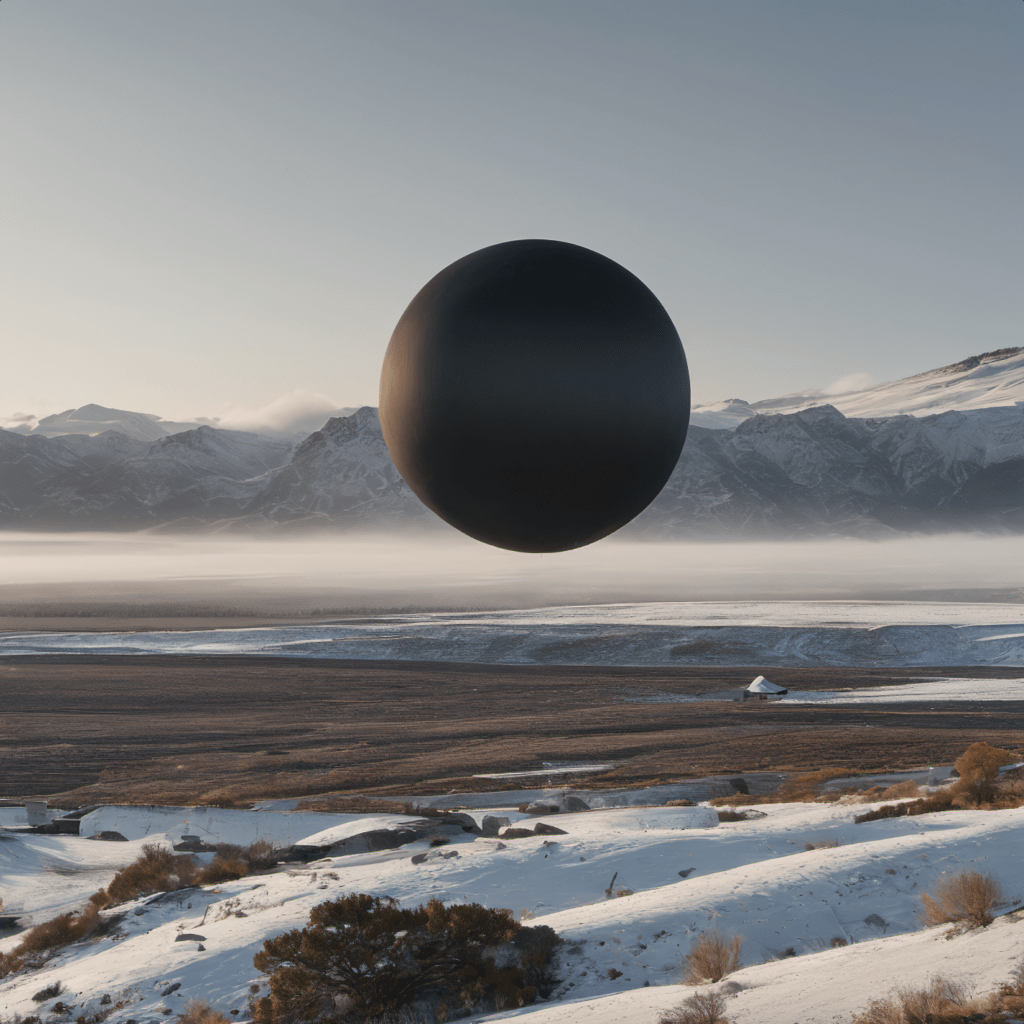
Art for Memento Australis, which imagines a dystopian Atacama Desert in Chile.
– I would like to end the article with a reflection on the challenge that exists at a human level and that taken to the musical field, to art. What goals should we set before us?
Andres: I think that from art we have the possibility to reach new audiences and to raise awareness about certain issues. We have to be attentive to the pressure exerted by the music industry and not fall into its rules. Not to copy formulas that “work”, to encourage us to make new experiments and above all, to open ourselves to dialogue between artists to strengthen and unite us more.
Nim: In general there is an association between art (and particularly with music), with entertainment, and an escape from reality into fantasy worlds. In the best of cases as a company that lightens the sorrows, and helps to recover the mood.
I would like to believe that this is not all, and that it can also serve to intervene in the realities in which it is inscribed.
After proposing to the artists to join our proposal, we were surprised and moved to recognize ourselves in their sensitivity, and in the anguish and helplessness that also caused them to witness the destruction of their natural environments, of which we are part and which constitute us in turn.
We know that giving visibility, and even donating part of the profits to the restoration of ecosystems will probably not have a great impact, but this humble contribution represents for us to claim our voice, and exercise the power to do what is within our reach. Which is all we have left.
